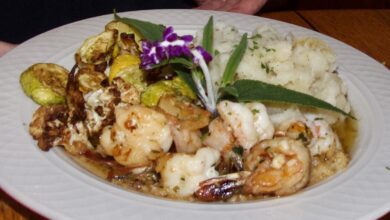From Linda and I on our anniversary, a love fest in the skies and on our porch- enjoy!

Lessons of romance, hope and elegance from bugs that live about two weeks
These two huge Western Tiger Swallowtails doing a mating dance in the backyard. I watched in awe for 15 minutes, then Linda took their pictures for about a half hour. These two are so beautiful they don’t mind their coitus being filmed.
They are the largest butterfly type in Mendocino County, and larger by wingspan than even the Mexican Tiger Moth.


The male will stake out a body of water, like our pond and wait for a female to come along and then he begins the mating dance. They live only 6-14 days when out of the cocoon, but man do they really live, a worm becoming a flying machine with maneuverability, ability to change direction grace and soft landing gear that the greatest manmande aircraft do not compare to. (Ok they go faster but that’s why jets never find love).
I’m glad that they came in July, at the very end of their mating season. Only this far north do they come in July. We just cut down chest-high weeds, flowers and brush here, so now when the female lays her clear eggs on leaves, they can survive.
Our native willows, which I despise, are where they lay their eggs. The adults eat our butterfly bush but the young caterpillars prefer Willow to everything else. We have two other kinds of willows as well, where I shall see if I can find her eggs in a week or so.
As we watched, they came up on the deck and danced like Ginger Rogers and Fred Astaire all over the deck. Then they would take off for a flight above the pond together, splitting apart then coming back together at the rhodie, at our pear tree and especially among the cattails and their cotton.
Here is a great local story with great detail from a nursery in Marin
There is one swallowtail butterfly, an iridescent blue stunning critter called Pipevine Swallowtail that literally will only come if you have California Pipevine (Aristolochia californica), a toxic plant for mammals and birds. The pipevine produces toxic alkaloids, called aristolochic acids, which the butterfly uses to great advantage. The larvae consume the toxic alkaloids as they eat the foliage; in fact they munch on the same leaf for quite a while because apparently feeding stimulates the plant to increase the chemical defense. The larvae sequester the toxins in their body; the toxins are passed on to the adults; and the females transfer the toxins to the eggs!
If you have fennel planted, the Anise Swallowtail may appear and use it to lay eggs on. Young anise prefer fennel to everything else so much they don’t stop until they find it and can fly 100 miles looking. Unlike the Pipevine, they will choose other plants.
The pale swallowtail is similar but lighter in color and smaller in size than the Tigers. They seek hilltops and remote forest areas, not bodies of water and are not as bold as these two were.
Our Western Tiger Swallowtail butterflies come back year after year. The caterpillars stay high up in the tree and create that incredible time machine suit on the tree, it looks like Han Solo after being frozen into a painting in Star Wars, shoulders up, ready to fly, but frozen in place. The butterfly chews him or herself out of this elaborate sarcophagus, shakes off the wet stuff from inside and flies away.
They would both sit on the ground for a while and then fly up and intertwine together.
It’s hard to imagine a cooler mating dance, even in the bird world.
We also have monarchs passing through. The Western (Yellow) Tiger Swallowtail is the same size as the orange monarch. We had both in one bush out front more than once. Many sites reached by Google Search falsely assert the existence of a yellow Monarch. That’s the swallowtail. They are not closely related. The Mendocino Land Trust has a wonderful color brochure showing the two dozen local butterfly species. I posted a Red Admiral we had here, another large beauty.


Me and the 8th grade class laughed until we puked at two sun bears in the Six Flags in the 70s, while the adults tried to get us to unsee the frantic pumping. Nice try! This is what we sold all those stupid Swiss Army pocket knives to pay for this trip! (Imagine kids today selling pocket knives to people at the varsity basketball game. Holy smokes, maybe that wasn’t such a great idea).
But never, ever watch horses! I made that mistake. Butterflies!
Linda and I’s favorite book as lovers is “Hope for the Flowers” an allegorical novel written about the Hippie Days with two caterpillars named Stripe and Yellow who dream as worms and meet in the skies, The parable is about the two who initially strive to climb a giant pillar of other butterflies believing that reaching the top will bring them fulfillment. However they eventually realize there is so much more to life than this competitive climb, symbolized by the realization that they are meant to become butterflies and FLY. Rather like Linda and I, So we present this fun story on our 4th Wedding anniversary, Our 15th year together in Love !
.
Enjoy Linda’s photos show of somebody making love!











